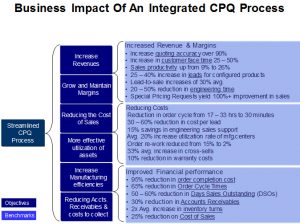
If you run any kind of business with an online presence here’s one good piece of advice: devote time to perfecting the user experience, including your web forms. The payoff? Luke Wroblewski, the notable web designer stated in his book Filling in the Blanks, that revamping a form could increase completion rates by 10-40%. Not a thing to ignore, right?
There are many things that you can do to improve your web forms performance.
Let’s take a look at a couple of important aspects as well as best practices.
Web forms as a conversation opportunity
At their core, web forms are a tool for collecting data (lots of it). But you’re an experienced marketer and know that quality should prioritize over quantity. Caroline Jarrett and Gerry Gaffney write in their book Forms That Work about how the quality of your collected data is directly influenced by the relationship you settle with your visitors:
“When your form asks your user a question, you want an answer; a piece of information that the user has and you do not. This represents an investment, even if it is only a tiny one, by the user in the relationship with your organization.”
Cater that relationship by making your forms a medium for conversation. As in all good conversation consider establishing a form flow with some introduction (a title, a brief description of the purpose of the form), progress indicators and form validation (to ensure that the information provided can be parsed or understood by the user).

(Source: 123ContactForm)
Good conversations also require that the questions you ask can be easily understood by the user and that they feel relevant. Unclear or intrusive questions are one of the reasons why users often abandon the form or offer pseudo info. So, before tweaking the layout of your forms you should first give some attention to evaluating what you’re asking for.
Best practice: start developing a question protocol for each of your forms and shape up questions from there on.
Web forms as a conversion tool
One of the first things to consider on this matter is form length. The number of form fields really does matter. Expedia gained $ 12 million in profit by removing just one redundant field from a form. Want to increase form conversions?
Best practice: Stick with as little fields as possible, balancing between a smooth user experience and your business needs, as this HubSpot analysis shows.

(Source: Hubspot)
Once you’re settled with the number of fields, highlight the required ones. That way you’ll avoid the scenario when a user submits a web form only to later find out that he missed required input fields.
Moving on. Tweaking your form conversion is about taking care of details. And one of these details is labels and their placement. Uxmatters showed in one of their case studies that the placement of labels in forms can affect the speed with which the form is completed.
Best practice: labels placed left, above the form field are the fastest and easiest variant to read.

(Source: 123ContactForm)
Next move in optimizing your forms is form copy. Right there, form title and the call to action button are very important. The title should communicate the purpose of the form while the CTA button should give that extra kick to make visitors take the final step.
Best practice for CTA form buttons: Highlight the benefit your readers are going to gain once they take action. To get this practice right try to write your CTA completing this sentence: I want to______________. Michael Aagaard of Content Verve showed in his tests how button clicks increased considerably because they were written in the first person and pinpointed the most important benefit.

(Source: ContentVerve)
Last but not least, keep an eye on the form surrounding space; this could prove useful in offering extra reasons for not abandoning the form. Include trust seals to minimize friction, avoid text cluttering, use directional cues and link to your privacy policy to help hesitant visitors hand you their info.
(Source: JXTGroup)
So, whether you’re collecting emails for a newsletter or selling online, you need forms if you want relevant information from the user. With these at hand, now you have the setup insights to get to work and start building web forms that trigger better user participation and higher conversions.
(261)






